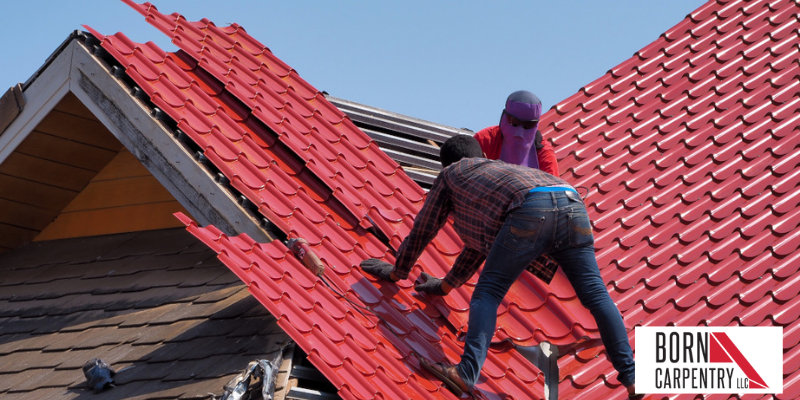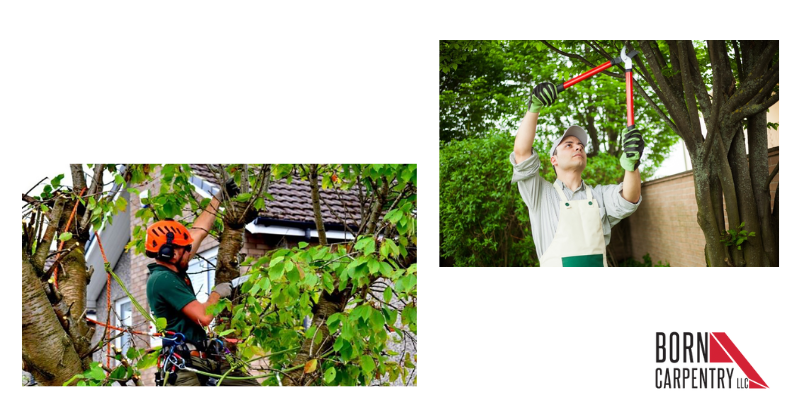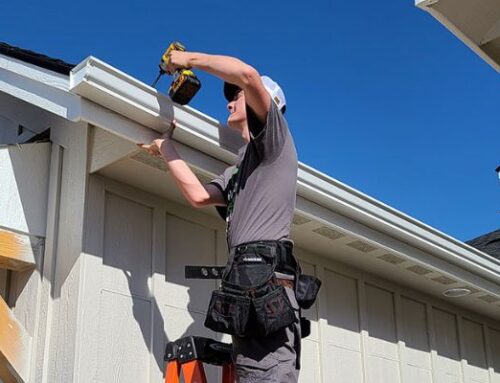In some cases, the weather can be a homeowner’s nightmare. It primarily causes wear and tear on your roof. Heavy water can cause damage, and so can flying or falling debris. Storm damage can be catastrophic if you live in an area prone to severe weather. However, you can still protect your roof from storm damage.
10 Tips To Protect Your Roof From Storm Damage
You may be unable to protect your roof from storm damage if you are unprepared. However, you can minimize or prevent storm damage to your roof if you proactively prepare for a storm. Here are 10 tips to protect your roof from storm damage…
#1 Get An Inspection

Maintaining your roof is a good way to ensure that it lasts for as long as possible. This is particularly important before the storm season, as routine maintenance will enable you to spot issues with the roof on your home.
You should call a good roofer if you have not inspected or carried out maintenance on your roof in a while. Roofers are sure to perform a thorough inspection and fix any problems they find. If you have had a roof inspection recently, walk around your house to check for signs of damage.
#2 Remove Debris
Your gutters can become clogged from debris. After a storm, debris that remains on your roof can retain moisture. This can lead to rot and mold in the areas where they are collected.
Ensure that you check your roof to remove any debris you may find. You should do this once in a while but particularly before storm season kicks in.
#3 Clean Gutters And Downspouts
Water will be unable to flow off your roof if your gutters or downspouts are blocked. The water that does not flow off gets backed up under the shingles and onto your roof and can leak into your home.
Uneven or dented gutters can prevent the proper flow of water into the downspouts. As a result, water collects and pools inside the gutter. Ensure that you clean your downspouts and gutters as the buildup of water can weaken or loosen fasteners, leading to roof damage.
#4 Trim Trees

Trim or cut down small branches or tree limbs that extend over your house. When swayed by the wind, any branch close enough to touch your roof can lift shingles or damage your roof.
Be sure to trim your trees annually. Keep them at least 6 feet away from your roof. If they are far away from your roof, there will be a reduced risk of falling branches that could cause damage. Moreover, leaves and other debris will not collect on your roof.
#5 Prevent Ice Dams
The dangers of winter storms are sometimes similar to those of summer storms. Strong winds cause frozen branches to easily break off. Additionally, the snow that collects on your roof can melt and refreeze to cause ice dams.
Your first line of defense should be to prevent ice dams. Water/ice shields can add an extra layer of protection to your roof.
#6 Secure Loose Items Around The House
Lawn decorations, patio furniture and other loose items around your house can become flying debris when there are heavy winds. These items can become projectiles so you must store them away safely or tie them down so that they will not be too dangerous to your home and/or someone else’s. This is particularly important if you live in areas where tornadoes or hurricanes are common. The added force of the wind can break your window and change the pressure inside your house. It can also compromise the stability of your roof and even lift it off the house completely.
#7 Check Large Trees For Weakness
Heavy winds can uproot or break diseased or weak trees. Therefore, you must inspect the trees around your house to ensure that they are healthy. Look for tell-tale signs that a tree is stressed. Some signs that a tree is suffering may include missing bark or deformed leaves. These signs are indications that the tree could possibly cause damage to your home during storms. The tree does not have to be near your house for it to cause damage. Heavy winds can uproot weakened trees and blow them so that they damage your gutter, downspouts or roof.
#8 Buy Some Tarps
Tarps are difficult to find after a storm. This is because, after a storm, supplies like plastic and tarps are often sold-out at home improvement stores. Roofers sometimes deal with supply shortages especially when a storm is widespread.
Therefore, buy and set aside some tarps before the start of the storm season. This way, you will be well-equipped to prevent storm damage and even make temporary repairs.
#9 Check Your Insurance Policy
Go over your insurance policy. Ensure that you are aware of what it covers. Also, verify that your policies are up to date. Make your insurance policy and roof warranty easy to find by keeping them together.
Make preparations like downloading claim forms before the storm season. This is important as there could be power outages that could prevent you from accessing your policy online. Also, document the extent of storm damage by taking pictures or making a video immediately after the storm.
#10 Save Important Contacts In Your Phone
You will want to file a claim if you have experienced any storm damage. An insurance agent should be the next person to reach out to immediately after your family knows that you are safe. Thereafter, you can reach out to the roofer to schedule temporary repairs if needed.
You will save yourself time if you already have these numbers programmed into your phone. You must get repair work started immediately after a storm to prevent the issues from getting worse.
Summary:
Storms in some regions can be devastating. Not every home structure, especially the roof, makes it through each season. If and when you’ve got storm damage issues, call Born Carpentry of Minnesota at 612-747-8003.






